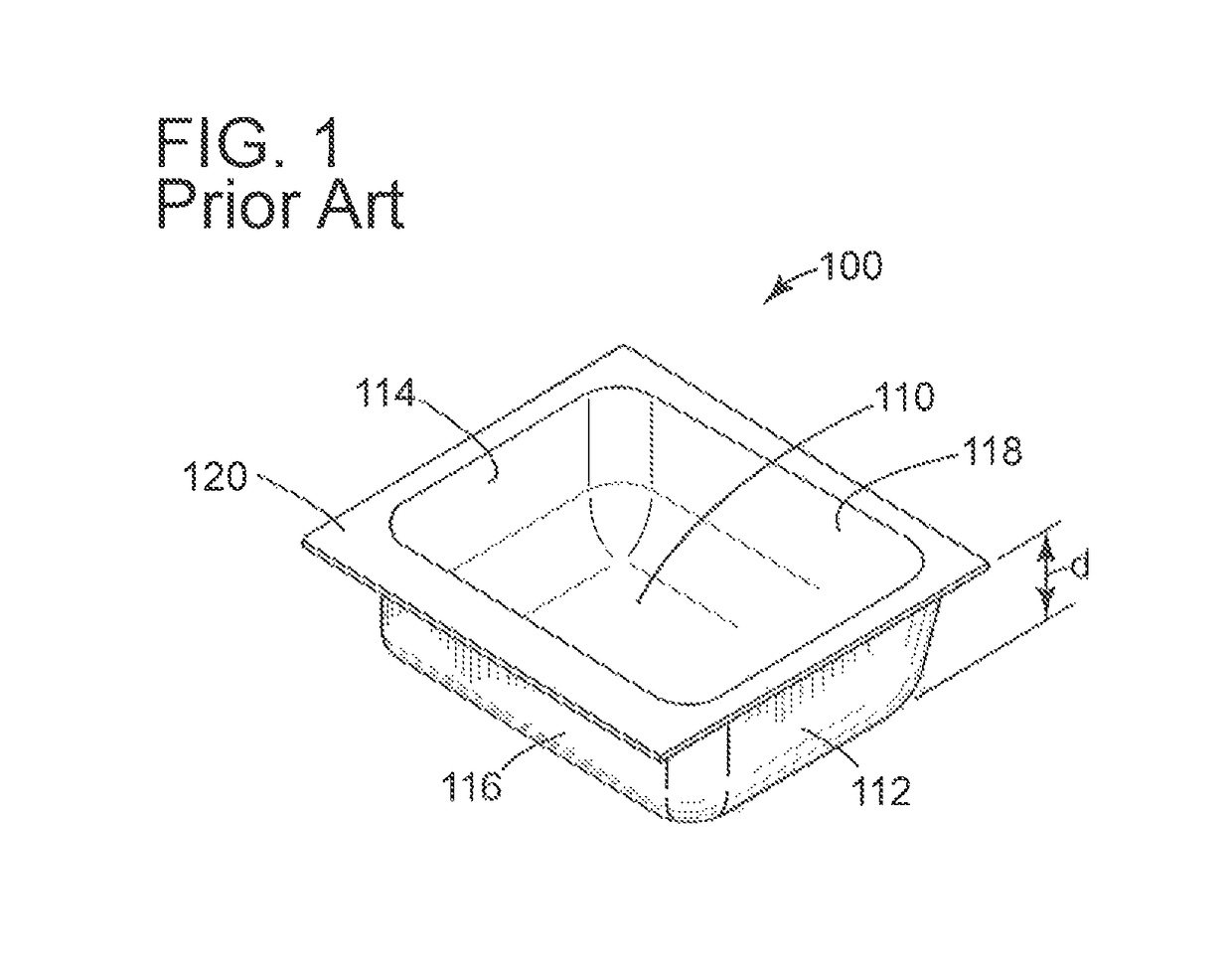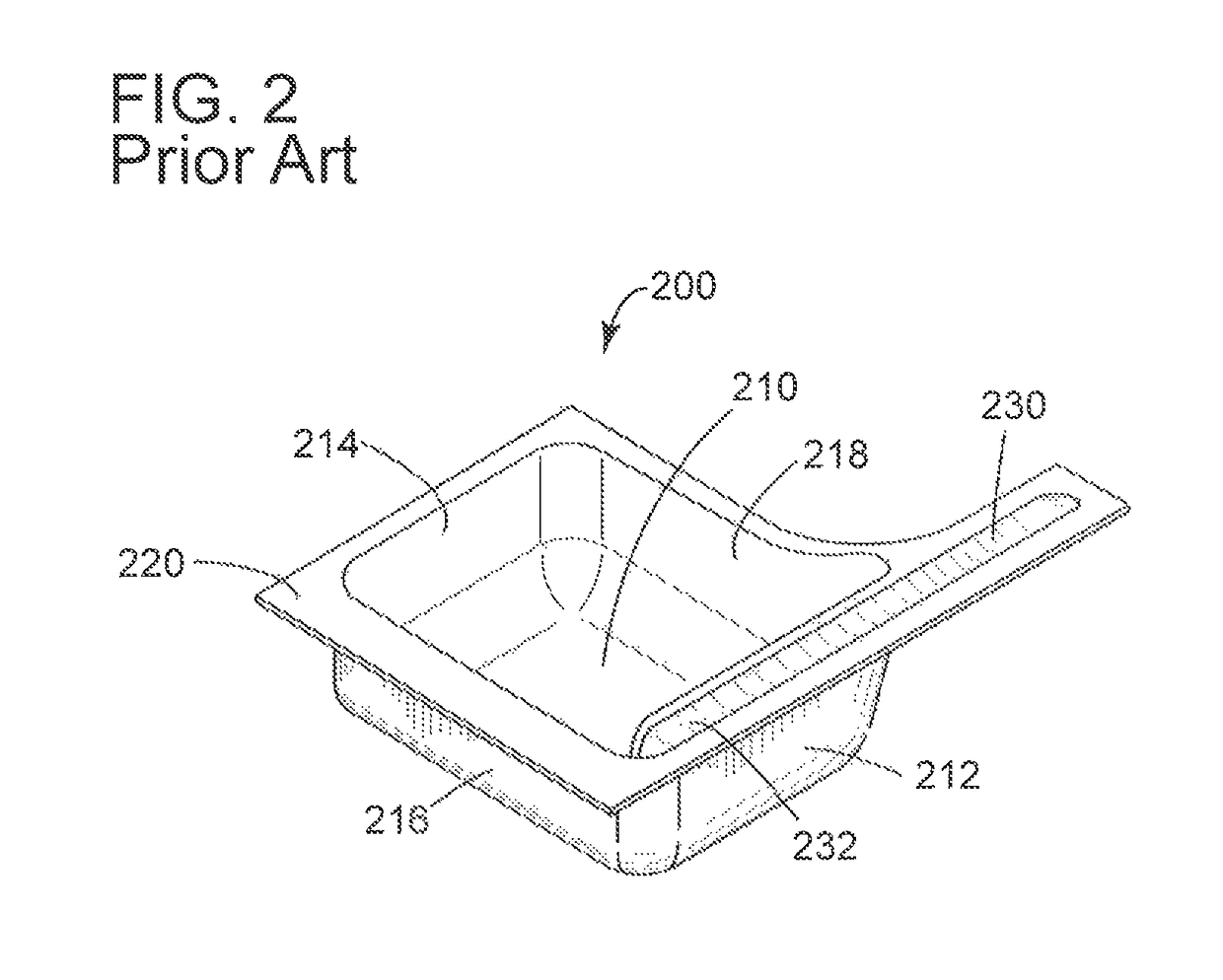Thermoformed flexible dispensing container with integrally formed flat bottom for a stand-up configuration
a flexible and stand-up configuration technology, applied in the direction of packaging, transportation and packaging, successive articles, etc., can solve the problems of increasing the amount of waste packaging material that must be subjected to proper disposal, the complexity of multiple methods of fabricating the gusset, and the relative higher cost associated with their production. , to achieve the effect of lowering the center of gravity
- Summary
- Abstract
- Description
- Claims
- Application Information
AI Technical Summary
Benefits of technology
Problems solved by technology
Method used
Image
Examples
Embodiment Construction
[0037]Referring to FIGS. 1 and 2, simplified representations of two dies of the prior art for producing corresponding thermoformed flexible containers of regular generally rectilinear configurations are shown. In FIG. 1, the die 100 includes container portion 110 having opposing side walls 112, 114, and front and rear walls 116, 118, respectively. The walls are of a uniformed height “d”, and are bounded by a peripheral area 120.
[0038]In FIG. 2, the prior art die 200 includes similar elements numbered correspondingly, but the die includes a dispensing tube 230 having an internal extension 232 to provide the user with access to liquid contents at the base of the container when the tube is oriented in a vertical position.
[0039]FIGS. 3 through 9 illustrate, respectively, dies and the corresponding packages having supporting flat bases in accordance with the invention produced in the dies, including representative packages with dispensing tubes that serve as drinking straws in FIGS. 7 th...
PUM
| Property | Measurement | Unit |
|---|---|---|
| flexible | aaaaa | aaaaa |
| gravity | aaaaa | aaaaa |
| area | aaaaa | aaaaa |
Abstract
Description
Claims
Application Information
 Login to View More
Login to View More - R&D
- Intellectual Property
- Life Sciences
- Materials
- Tech Scout
- Unparalleled Data Quality
- Higher Quality Content
- 60% Fewer Hallucinations
Browse by: Latest US Patents, China's latest patents, Technical Efficacy Thesaurus, Application Domain, Technology Topic, Popular Technical Reports.
© 2025 PatSnap. All rights reserved.Legal|Privacy policy|Modern Slavery Act Transparency Statement|Sitemap|About US| Contact US: help@patsnap.com



